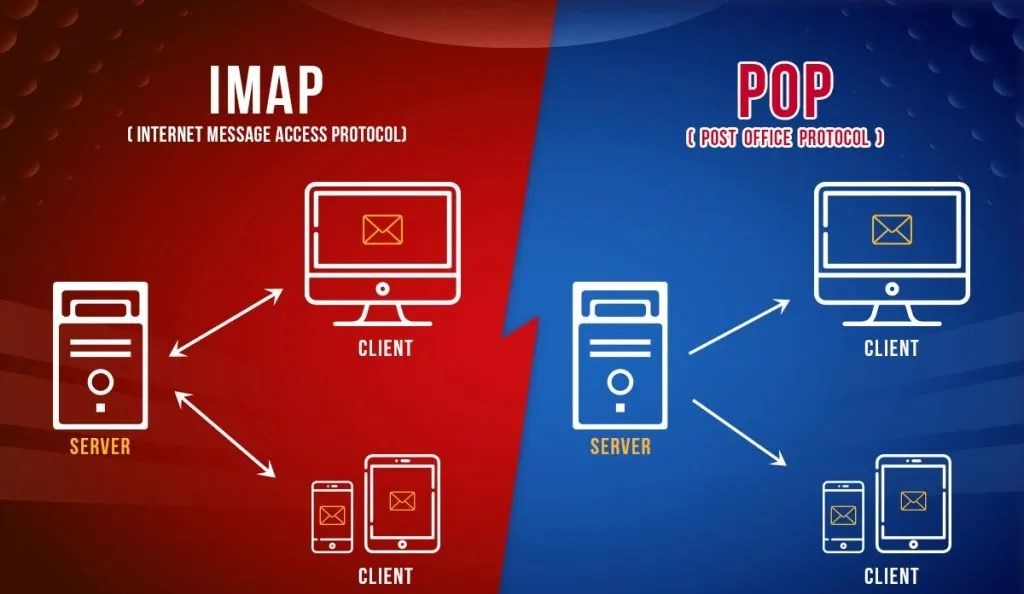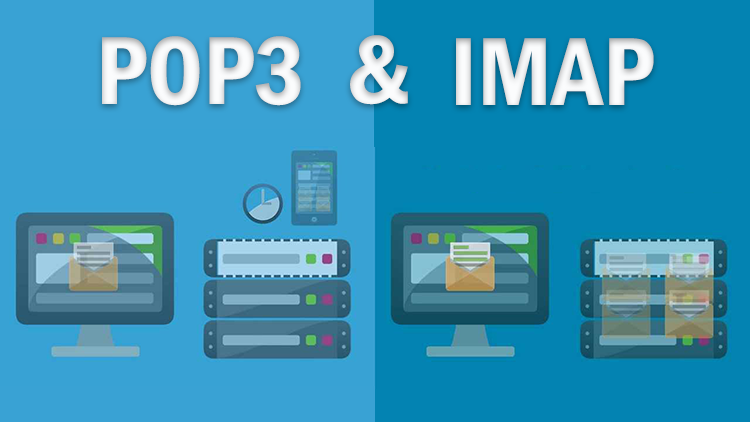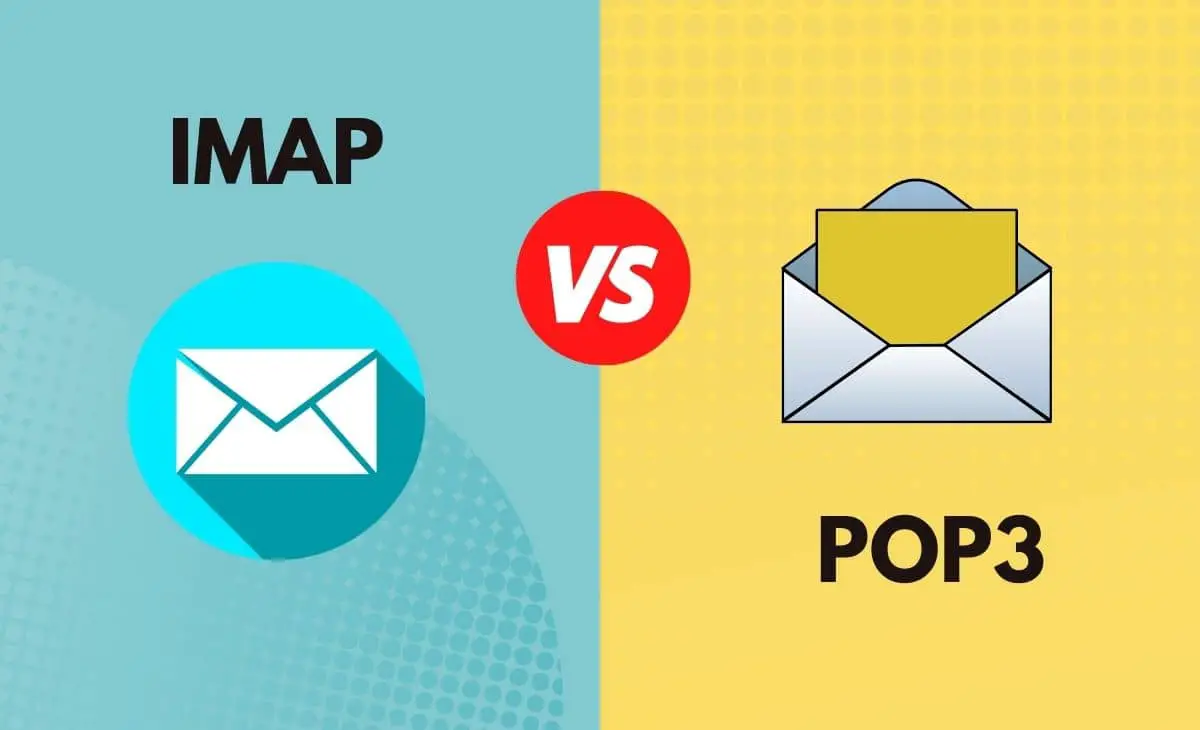IMAP (Internet Message Access Protocol) and POP3 (Post Office Protocol 3) are both email protocols used for retrieving emails from a mail server, but they have some key differences in terms of functionality and how they handle emails:

Contents
IMAP (Internet Message Access Protocol):
Configuring an email client to use (Internet Message Access Protocol) involves several steps. Here’s a general guide to help you set up (Internet Message Access Protocol) for your email account. Keep in mind that the exact steps might vary slightly depending on the email client you’re using, but the principles are generally the same.
What is IMAP?
IMAP stands for Internet message access protocol. (Internet Message Access Protocol) allows you to view all your emails that’s on the email server from multiple devices. Not only are the emails saved on the email server, but Internet Message Access Protocol also caches copies of your email to all your devices.
Additionally, Internet Message Access Protocol synchronises all your folders. Unlike Post Office Protocol, (Internet Message Access Protocol) synchronises your inbox folder, sent folder, deleted folder etc.
When using (Internet Message Access Protocol), keep in mind that if you delete a retrieved email from your smartphone, that email will automatically be deleted from your computer and the email server. The same applies when you create a folder, the folder will also show up automatically on your computer and the email server.
Benefits of Internet Message Access Protocol
With (Internet Message Access Protocol), you can easily transfer all your old email archives to your new email program if you ever decide to switch email clients. It will only take a few minutes, and you can easily download all your emails from the server.
When you choose an email set up with (Internet Message Access Protocol) at one.com, all your emails will have a saved copy on the mail server. Meaning, if your computer breaks or gets stolen, you don’t have to worry about losing your data. Our backup system at one.com protects your mail against almost any risk you can imagine.
Unlike Post Office Protocol, Internet Message Access Protocol saves a copy of your emails. Hence, (Internet Message Access Protocol) can retrieve emails from the email server multiple times as a copy of the email will always exist on the server until you decide to delete it. 
- Email Storage:
- Internet Message Access Protocol stores emails on the mail server, and your email client (e.g., Outlook, Thunderbird) interacts with the server to access and manage emails.
- Multiple Device Access:
- Designed for multiple devices to access the same mailbox. Actions taken on one device (read, delete, mark as unread) are reflected on all devices because the emails are stored centrally on the server.
- Synchronization:
- Changes made on one device are synchronized with the server and, subsequently, with other devices. This includes read/unread status, folder organization, and deleted emails.
- Offline Access:
- Provides better offline access compared to Post Office Protocol. While it requires an internet connection to synchronize changes, a local cache on the device allows for offline access to recent emails.
- Server-Side Storage:
- Since emails are stored on the server, you can access your entire mailbox from any Internet Message Access Protocol-enabled device without worrying about local storage limitations.
POP3 (Post Office Protocol 3):
Configuring an email client to use POP3 (Post Office Protocol 3) involves a series of steps. Below is a general guide to help you set up a Post Office Protocol email account. Keep in mind that the exact steps may vary slightly depending on the email client you’re using, but the general principles remain the same.
What is POP3?
POP3 stands for post office protocol 3. One of the differences between IMAP and POP3 is that Post Office Protocol is simpler than Internet Message Access Protocol. Post Office Protocol only job is to download emails to your smart devices or computer from an email server. Additionally, Post Office Protocol only downloads emails that are in your inbox folder. For example, it will not download emails from your spam folder, your draft folder, your sent folder, your deleted emails, etc.
POP3 does not synchronise. This means that once Post Office Protocol retrieves emails from an email server, the email server will delete the emails. Therefore, there will be no saved copy on the email server once POP3 has retrieved it.
Thus, if you have two computers, once one of the computers retrieve your emails from the email server, the other computer will not be able to retrieve the emails as it’s already been deleted.
Benefits of POP3
- POP3 uses bandwidth more efficiently than Internet Message Access Protocol does. This is especially good if you have slow internet connections.
- There is no limitation on the size of your inbox with Post Office Protocol.

- Email Retrieval:
- Designed to download emails from the mail server to the local device. Once downloaded, emails are typically removed from the server, although there are options to keep copies.
- Single Device Access:
- More suitable for a single-device setup, as it doesn’t keep emails on the server. If you access your email account from multiple devices, you may not see the same set of emails on each device.
- Offline Access:
- Provides limited offline access because emails are downloaded to the device. If you switch devices, you may not have access to your full email history.
- Local Storage:
- Emails are stored locally on the device. This can consume more local storage space, especially if you have a large volume of emails.
- No Synchronization:
- Changes made on one device are not reflected on other devices. Each device that connects to the server with Post Office Protocol will download its own copy of emails.
Choosing Between IMAP and POP3:
- Use IMAP if:
- You access your email from multiple devices.
- You want changes (read/unread, deletions, folder organization) to be synchronized across devices.
- You have concerns about local storage on your devices.

- Use POP3 if:
- You primarily access your email from a single device.
- You want to conserve local storage on the server.
- You don’t need real-time synchronization between devices.


